 Humans
Humans  Humans
Humans  Movies and TV
Movies and TV 10 Holiday Movies Released at Odd Times of the Year
 Politics
Politics 10 Countries Where Religion and Politics Are Inseparable
 Weird Stuff
Weird Stuff 10 Freaky Times When Famous Body Parts Were Stolen
 Miscellaneous
Miscellaneous 10 Interesting Things Manufacturers Stopped Making and Why
 Gaming
Gaming 10 Funny Tutorials in Games
 History
History 10 Fascinating Little-Known Events in Mexican History
 Facts
Facts 10 Things You May Not Know about the Statue of Liberty
 Movies and TV
Movies and TV 10 Movie Adaptions That Brought Popular Songs to Life
 Health
Health 10 Miraculous Advances Toward Curing Incurable Diseases
 Humans
Humans 10 One-of-a-kind People the World Said Goodbye to in July 2024
 Movies and TV
Movies and TV 10 Holiday Movies Released at Odd Times of the Year
 Politics
Politics 10 Countries Where Religion and Politics Are Inseparable
Who's Behind Listverse?

Jamie Frater
Head Editor
Jamie founded Listverse due to an insatiable desire to share fascinating, obscure, and bizarre facts. He has been a guest speaker on numerous national radio and television stations and is a five time published author.
More About Us Weird Stuff
Weird Stuff 10 Freaky Times When Famous Body Parts Were Stolen
 Miscellaneous
Miscellaneous 10 Interesting Things Manufacturers Stopped Making and Why
 Gaming
Gaming 10 Funny Tutorials in Games
 History
History 10 Fascinating Little-Known Events in Mexican History
 Facts
Facts 10 Things You May Not Know about the Statue of Liberty
 Movies and TV
Movies and TV 10 Movie Adaptions That Brought Popular Songs to Life
 Health
Health 10 Miraculous Advances Toward Curing Incurable Diseases
10 Reasons The Next Pandemic Is On The Horizon
It is a matter of when, not if, we will see another global outbreak of a deadly disease. Public health officials say there is reasonable probability a worldwide outbreak of a fast-moving pathogen could occur within the next fifteen years.
It has been nearly a century since the 1918 Spanish flu claimed millions of lives. The widespread disease infected over 500 million people and caused tens of millions of deaths. Despite the major advances in medicine and technology during the last century, we are not safe from experiencing a similar outbreak today.
Here are ten reasons we are on the brink of another deadly pandemic.
See Also: 10 Horrifyingly Deadly Sweets And Treats
10 Population Increase

During the Spanish flu outbreak of 1918, there were less than two billion people living on the planet. The widespread disease killed approximately 2.5% of the global population, around 50 million people. Today, there are 7.6 billion people living on earth. Another pandemic with the same global mortality rate would result in 190 million deaths.
High population rates increase the spread of infectious diseases. More people are occupying the same area, which leads to more contact between humans and more opportunities for diseases to spread.
More than half of the world’s population lives in urban areas, and this percentage continues to increase. Communicable diseases spread quickly in major cities. People who use public transportation come in close contact with each other. Living arrangements are crowded. And in many countries, densely populated areas contain slums, where people live in unhygienic conditions that promote the growth and spread of bacteria.[1]
9 Antibiotic Resistance
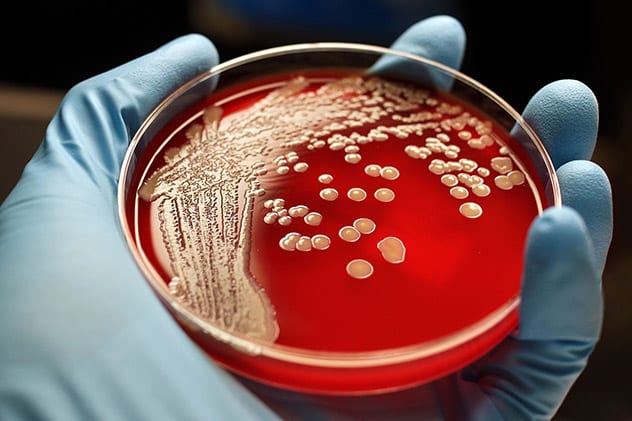
For the past 70 years, antibiotics have been used to treat a wide range of infections caused by bacteria. But these drugs are losing their potency as bacteria mutate and become antibiotic-resistant. Infections caused by antibiotic-resistant bacteria are very difficult, and sometimes impossible, to treat. Tom Frieden, former director of the Centers for Disease Control and Prevention, stated during a 2014 press event that antibiotic-resistant bacteria could cause the next pandemic.
CRE is a family of antibiotic-resistant bacteria that is very concerning. CRE bacteria are named for their resistance to carbapenems, a class of antibiotics that are very potent and typically effective against drug-resistant bacteria. Earlier this year, the World Health Organization published a list of the top 12 antibiotic-resistant bacteria. The bacteria were prioritized by which pathogens required the most immediate attention in developing a new treatment. The top three, considered “critical,” were all resistant to carbapenem. The remaining strains of bacteria on the list showed resistance to some antibiotics, but not the strongest ones. These pathogens cause diseases such as pneumonia, blood infections, and gonorrhea.
If the rising problem of antibiotic resistance is not addressed, many infections that are easily treatable could become a death sentence. Unfortunately, pharmaceutical companies do not prioritize creating new antibiotics. The process requires a high investment in research and development costs, and provides a low profit since patients only take the drugs for a short period of time.[2]
8Constant Flu Mutations

Experts point to the flu virus as one of the most likely suspects to cause the next pandemic. Unfortunately, this knowledge does not mean anything can be done to stop it.
The flu is hard to predict and hard to plan for. Currently, the best form of protection is a seasonal influenza shot, which is far from reliable. Scientists create the yearly vaccine months before the onset of flu season. They make an educated guess of which flu strains will be circulating and prepare the vaccine accordingly. The effectiveness of the flu shot varies by year. During the 2015-2016 flu season, approximately half of people who got the flu shot were actually protected from the strains that were active that year. The 2014-2015 flu season was even worse, with only 19 percent of vaccinations providing protection from that year’s viruses.
Only a few strains of the flu virus circulate worldwide, but it is believed that dozens more exist. Each strain mutates every year. The degree a strain mutates is a major factor in how dangerous the resulting virus is. Some flu mutations are very slight. It only takes a small difference for the flu to become unrecognizable to the human immune system. This is what creators of the seasonal vaccine attempt to predict and protect against. But some years, the flu undergoes such drastic mutations that it emerges as almost a completely new virus. These are the years that result in a pandemic, such as the virus mutation that caused the Spanish flu of 1918.[3]
7 Increased Travel

The frequency, speed, and accessibility of modern travel are unprecedented. People can travel across the globe in a day. This means that diseases can spread just as quickly.
Travel puts people at risk for completely new diseases, or new strains of familiar diseases. People that travel to foreign countries can inadvertently introduce bacteria or viruses to the area that local populations are less equipped to handle. One reason the 2014 Ebola outbreak was so deadly in West Africa was because the area had not previously encountered the Ebola virus. Their unprepared health systems were not familiar with treating the disease, and the local people had no natural immunity or tolerance built up from prior exposure to the virus.
Also, people typically spend time in areas that provide favorable environments for infections to spread during travel, such as airplanes and hotels. These settings force people to come in close contact with each other and share germs. At the beginning of the 2003 SARS outbreak, an infected Chinese doctor stayed at a hotel in Hong Kong before falling ill and dying. The disease spread to other people staying at the same hotel, who then boarded planes and carried the pathogens to other countries. Within five months of the Chinese doctor checking in to the Hong Kong hotel, SARS had infected more than 8,000 people in more than thirty different countries, with 774 cases resulting in death.
As global travel continues to increase, so does the international spread of contagious diseases.[4]
6Deforestation
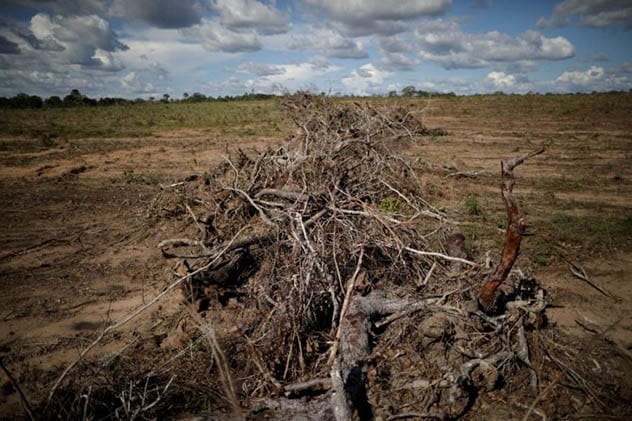
Approximately 75% of new infectious diseases are zoonotic, meaning they spread to humans from animals. As the frequency of contact between humans and wildlife rises, so does the risk of infection. Deforestation increases the occurrence of diseases such as Ebola and malaria because it disrupts the environment of animals that host the illness-causing bacteria. When their habitats are destroyed, animals are forced to seek food and shelter elsewhere, which often brings them in closer contact with humans.
The idea that deforestation increases the spread of disease is not a new one.
In the late 90’s, a study of mosquito activity in Peru showed that a malaria-carrying species living in a deforested area bit people almost 300 times more frequently than the same species living in an untouched forest. According to a 2010 study, cutting down only four percent of a Brazilian forest resulted in a fifty percent increase in malaria cases. Deforestation also contributed to an extreme drought in Brazil. This caused people to store more water in open containers, a practice that attracts mosquitoes and is believed to have increased the spread of Zika.
Mosquitos are not the only disease-carrier affected by deforestation. Primates, bats, and rodents are also rife with pathogens that infect humans. As long as we continue to encroach on the habitats of animals, we will continue to risk new illnesses, some of which could prove highly contagious and untreatable.[5]
5Research Risks

In 2014, American scientists created a virus very similar to the 1918 Spanish flu. Using a technique called reverse genetics, researchers at the University of Wisconsin – Madison manufactured the virus from fragments of wild bird flu strains. They also mutated the virus to make it airborne, a characteristic of the most dangerous deadly diseases.
Scientists in support of the study claim that recreating the dangerous virus is an essential part of understanding the risk it poses to the public. But many scientists are against these experiments, arguing that the act of creating these viruses poses a threat to the human population. Even in the highest-security labs, creating a dangerous pathogen is a risky activity. Critics of this practice state there is little to no evidence that these experiments actually help save lives, though they definitely jeopardize them. An epidemiology professor at Harvard School of Public Health warned that if a dangerous virus escaped or was intentionally released from a lab, it could cause a catastrophic pandemic.[6]
4 World Health Organization Response
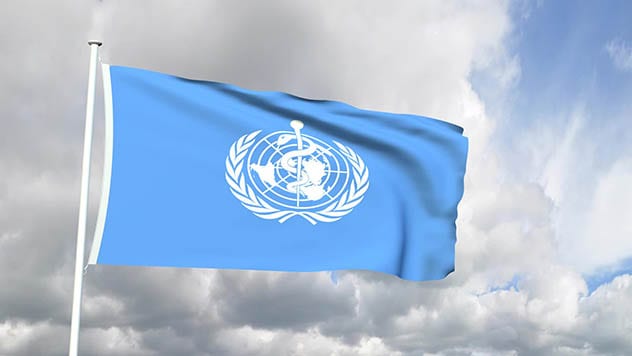
When the next highly-contagious and fast-spreading disease starts moving across the globe, preparedness will determine the number of lives lost. People need to be aware of a threat in order to take precautionary measures. The World Health Organization is the main watchdog for global health, and they are responsible for sounding the alarm during an outbreak. But the WHO cannot be trusted to do this in a timely matter.
The recent Ebola outbreak began in early 2014. The WHO did not declare a public health emergency until August of that year. It was five months after Guinea and Liberia started experiencing outbreaks. A panel of independent global health experts stated that the delay caused “needless suffering and death.”
The WHO was heavily criticized for their slow response during the Ebola outbreak. They vowed to make improvements so that their response time and effectiveness would be better in the future. We will have to hope this is true, because if they are slow to identify the next pandemic, the damage will be done by the time they apologize for their procrastination.[7]
3 Climate change

Vector-borne diseases are illnesses transmitted to humans by fleas, ticks, mosquitos, or any other organism. As climate change warms the globe, the occurrence of these diseases as well as the geographical range of cases has increased.
Malaria, Zika, and Dengue are just a few of many lethal viruses transmitted by mosquitos, with Malaria being the deadliest. Mosquitos thrive in warm climates. Global warming can cause mosquito populations to spread geographically as more areas become hospitable to the disease-carrying insects. Climate change also creates longer warm seasons for mosquitos to breed, generating more vessels capable of transmitting infections to humans.
Fleas and ticks also thrive in warm climates and transmit a number of dangerous diseases, including Congo-Crimean haemorrhagic fever, typhus, and Lyme disease.[8]
2 Bioterrorism
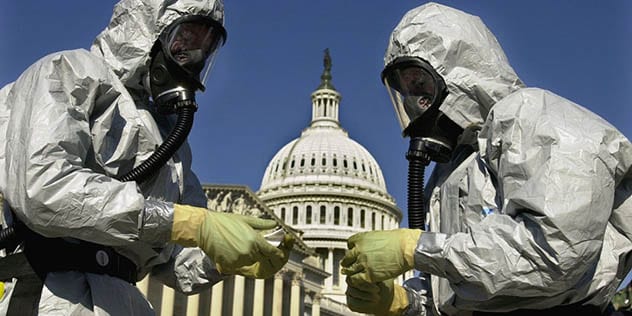
The next pandemic could be the result of an intentional attack.
Bill Gates, one of the richest men in the world, has spent the last 20 years funding a global health campaign. Earlier this year, he spoke at a security conference in Munich. Gates warned that bioterrorism, the intentional release of viruses or germs, could be responsible for killing millions of people.
The threat of bioterrorism has increased during the past five years. Changes in molecular biology have made the development of biological weapons easier and more accessible. A terrorist now has the ability to use genetic engineering to synthesize smallpox or create a highly-contagious and lethal version of the flu. Intelligence groups report that ISIS has been working on bioweapons at their Syria and Iraq bases.[9]
1Current Pandemic Potential
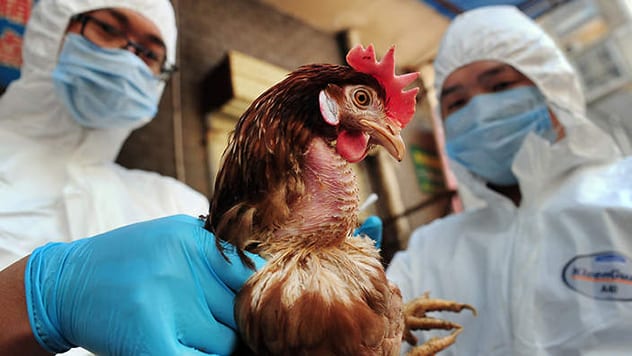
The H7N9 bird flu virus was first seen in humans in 2013, when two Chinese citizens died after contacting the disease. China has seen annual outbreaks since then, and recently experienced its fifth wave of H7N9 human infections. The fifth wave, which was marked as beginning in October 2016, has been the worst by far. There were more cases than the other four waves combined, and it covered the largest geographical area. The mortality rate of confirmed H7N9 cases is around forty percent. As of October 25, 2017, there have been a total of 1,622 confirmed H7N9 cases, with 619 resulting in death.
H7N9 is ranked by the Centers for Disease Control and Prevention as the flu strain with the greatest potential to cause a pandemic. So far, human infections of H7N9 have largely been attributed to the live poultry markets in China. But the virus is continuing to mutate, and could soon pose a much larger risk through human to human transmission.
Last year, a study was done on a highly pathogenic strain of H7N9. Ferrets, the preferred animal model for testing transmissibility of the flu virus in humans, were infected with the virus. Healthy ferrets and infected ferrets were placed in separate cages next to each other. The virus spread easily, killing two out of three healthy ferrets. The study proved that the virus could be transmitted through airborne respiratory droplets, such as those that occur during coughing and sneezing.
Based on the drastic mutations seen in H7N9 over the last year, the next wave of the virus could very well be highly-contagious between humans, and just as deadly. Currently, there is no effective vaccine for the latest H7N9 strains.[10]
For more lists like this, check out 10 Infectious Diseases That Changed History, and 10 Diseases That Possibly Came From Outer Space








